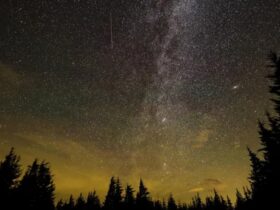The series of caste conflicts in Bihar took a dangerous turn starting from Bhojpur in the 1970s, where upper caste landholders fell prey to the growing power of backward caste leaders like Jagdish Mahato. This was followed by the Belchi massacre. Then a series of caste massacres started in the 1980s and 90s.
The attack on a Dalit colony adjacent to Bihar’s Nawada district headquarters on Wednesday evening has once again brought the violence against Dalits in the state into discussion. In this case, the houses of several Mahadalit families have been burnt to ashes. However, the district administration is calling it an isolated incident and the police administration is linking this case to an old land dispute. However, another Dalit named Nandu Paswan has been arrested on charges of plotting the attack on Dalits, but in Bihar, notorious for caste violence, this case has gained political momentum in no time.
While the main opposition RJD has attacked the Nitish government and called it ‘Maha-Jungle Raj’, Union Minister Jitan Ram Manjhi has called it an attack on Mahadalits by Yadavs. The most affected in this case come from Manjhi community. The Union Minister alleged, “Some domineering Yadavs misled some Dalits so that it appears that this is an attack by Dalits on Dalits.”
I remembered the Belchi incident
Dalits in Bihar have long been victims of violence. The most horrific was the Belchi massacre in 1977. Then former Prime Minister Indira Gandhi had to travel on an elephant to reach Belchi, a remote village located on the outskirts of Patna district. Its root cause was a conflict between members of the landless Paswan community and Kurmi landlords. Later, the accused in this case were sentenced to death.
Violence against Dalits is more in UP than Bihar
Data presented by the Home Ministry in Parliament in 2021 also confirms the rising attacks on Dalits. It states that around 1,39,045 cases of crime against Dalits have been registered in various states between 2018 and 2020. Of these, Uttar Pradesh recorded the maximum number of 36,467 cases of crime against Scheduled Castes (SC) in three years. It is followed by Bihar (20,973 cases), which has a long history of caste-based violence. The state has a long history of conflicts between landlords and landless poor castes (mostly Dalits). Bihar erupted in similar caste conflict in the late 1980s and 1990s. However, statistics show that it has reduced in the last few decades.
Caste conflict started from Bhojpur in 1970
Such caste conflict took a dangerous turn in Bhojpur in the early 1970s, where upper caste landholders fell prey to the growing power of backward caste leaders like Jagdish Mahato. This was followed by the Belchi massacre. Then in 1980, in the Paras Bigha massacre, armed mobs killed 13 Dalits and backward caste people. This incident was followed by a series of incidents of violence and counter-violence in caste conflict in the areas along the Son river. The worst was in Dohiya village where upper caste Bhumihars fell prey to Dalits just two days after the Paras Bigha massacre.
A long series of mass murders of poor and Dalits in Bihar
Since May 1977, Bihar has witnessed a long series of mass murders of the poor, including at Belchi, Dharampura, Bishrampur, Chainpur, Kaila, Pipariya and Parasbigha. In February 1980, heavily armed men attacked the houses of Dalits in Pipra village in Jehanabad and set them on fire in retaliation for the murder of a Kurmi leader a few months earlier. A total of 14 people, including six children, were killed in this incident. After this, the Munger massacre in 1983 and the killings in Bhagora village in Aurangabad district were also much talked about. However, the decade of the 1990s proved to be even bloodier, with incidents like the Bara massacre (1992), Ichari massacre (1993), Bathani Tola massacre (1996), Laxmanpur Bathe massacre (1996), Rampur Chairam massacre (1998), Senari and Shankarbigha massacre (1999) making national headlines and Bihar becoming even more infamous.














Leave a Reply